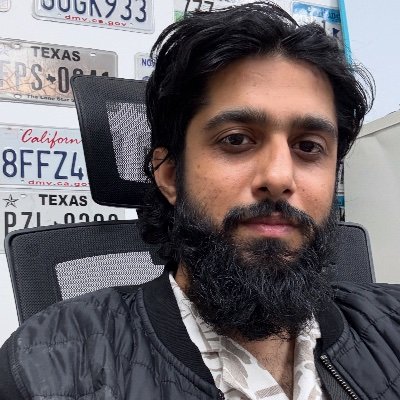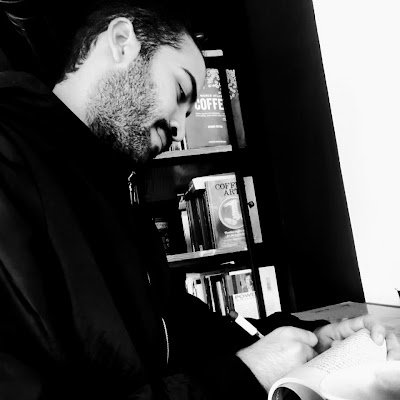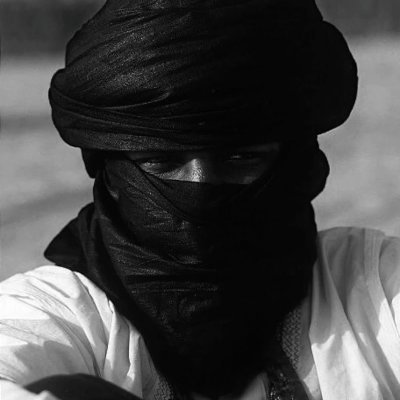
Hadith Notes
@Hadith_Notes
Hadith Studies | Arabic Manuscripts | Translations of Classical Islamic Literature | The Bukhārī Project | Instructor @qalaminstitute
Talvez você curta
That concludes my posts on marginal glosses. I explore the topic of ḥāshiyas in more detail in my new paper by Islamic Law and Society (Brill): “Hidden in the Margins”—on the intellectually rich hadith ḥawāshī in 19th-century India. brill.com/view/journals/…

There are many intriguing methodological traits of Ṣaḥīḥ al-Bukhārī that continue to fascinate me but most prominent are (1) Bukhārī's subtle critique of hadith by way of omission and (2) his presentation of defective hadith. [Below: hadith on the Mahdī and Walīd’s flogging]
![Hadith_Notes's tweet image. There are many intriguing methodological traits of Ṣaḥīḥ al-Bukhārī that continue to fascinate me but most prominent are (1) Bukhārī's subtle critique of hadith by way of omission and (2) his presentation of defective hadith.
[Below: hadith on the Mahdī and Walīd’s flogging]](https://pbs.twimg.com/media/G7KBMUdXQAAPYpp.jpg)
![Hadith_Notes's tweet image. There are many intriguing methodological traits of Ṣaḥīḥ al-Bukhārī that continue to fascinate me but most prominent are (1) Bukhārī's subtle critique of hadith by way of omission and (2) his presentation of defective hadith.
[Below: hadith on the Mahdī and Walīd’s flogging]](https://pbs.twimg.com/media/G7KBMxBXgAAdxdQ.jpg)
From the six books, Jāmiʿ al-Tirmidhī is a delight to study and teach. Rich in linguistic, hadith and fiqh commentary, it’s the earliest sustained hadith sharḥ. Here Tirmidhī casually hints at matn criticism and taʾwīl, alongside hadith grading and legal difference. chef's kiss!

My essay on the history and function of marginal glosses (ḥawāshī) is included in the inaugural issue of Yaqeen’s new journal, Ḥashiya, alongside several other exciting pieces. hashiya.org/posts/much-ado…

The historian al-Ṣāliḥī (d. 942 AH) could not afford side-quests in writing; he had to finish his Sīrah encyclopedia, built on many borrowed books whose loan period, he hints, may already have expired. Ah, but who can resist the sweetness of side-quests?

From the six books, Jāmiʿ al-Tirmidhī was often preferred for its accessibility and breadth compared to the more subtle and technical Ṣaḥīḥayn, as noted by Harawī (d. 481). No wonder some scholars preferred Jāmi al-Tirmidhī as the primary teaching text for Dawrat al-ḥadīth.


Ibn ʿAsākir’s mammoth 80 volume Tārīkh Dimashq always fascinates me. Mundhirī once said that Ibn ʿAsākir must have begun writing it once he “came to his senses” to complete it in his lifetime! Reminds me of Subkī’s comment that time-defying authorship is a miracle of the Umma!


Just received a copy of the Maṭbaʿ-i Niẓāmī edition of Sunan al-Dārimī, the very first lithographic printing of the work published in Kanpur in 1876. Hard to wrap my head around the fact that this copy is now a century and a half old. Thanks to @WazirChangezi for the gift!

My paper “A Tale of Two Ḥanafīs,” recently published in the Journal of Hanafi Studies, compares the intellectual legacies of Anwar Shāh Kashmīrī (d. 1933) and Zāhid al-Kawtharī (d. 1952) across six disciplines. You can obtain a copy of the journal from @hanafismjournal
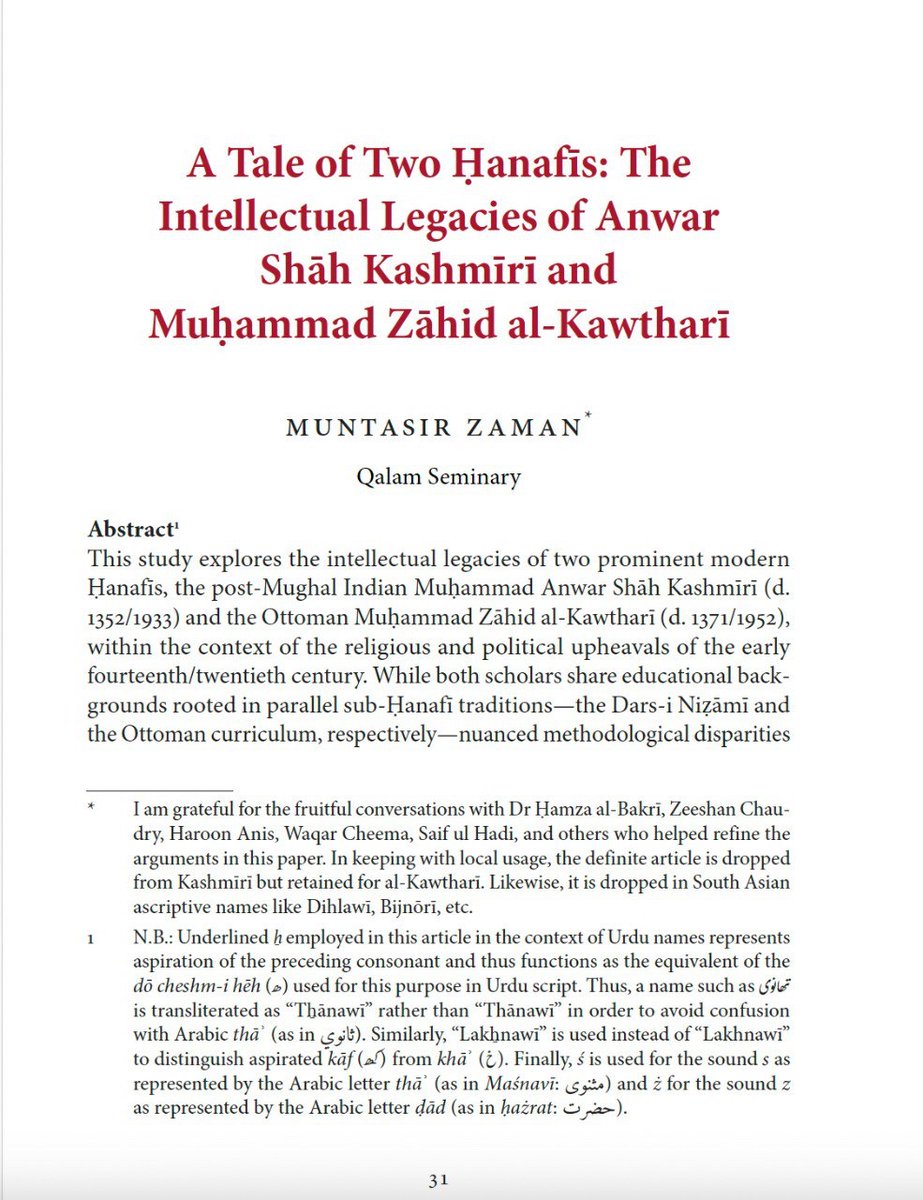
To date, the most rigorous study on Imām al-Bukhārī’s life and the compilation of his Ṣaḥīḥ is Aḥmad al-Aqṭash’s Qiṣṣat Ḥayāt al-Bukhārī (@aktash111). I reviewed the book for AJIS, covering its strengths, highlights, and limitations. ajis.org/index.php/ajis…

Imagine thinking hadith scholars needed the HCM to catch historical inconsistencies. Abū Ḥātim al-Rāzī and Imām Aḥmad would’ve just called that… anachronistic.


Hadith scholars make the HCM look like child’s play. As a simple example, Imam Muslim tosses a hadith. Why? Two solid reasons: it clashes with stronger reports and its narrator stands alone pace trusted peers. Then Muslim lays out "his critical method," systematic and testable.

A manuscript's cover page is always fascinating to read thanks to the scattered notes left by the many individuals who handled it over the centuries. In a sense, it's an open scholarly canvas (a kind of intellectual graffiti wall) constantly updated with random fawāʾid.

Just finished a quick read of Dr. Sāʾid Bakdāsh’s new primer on Ḥanafī Uṣūl al-Fiqh. Concise, accessible, and ideal for beginning to intermediate students. A welcome contribution from a leading editor in the field. Here are a few reflections:
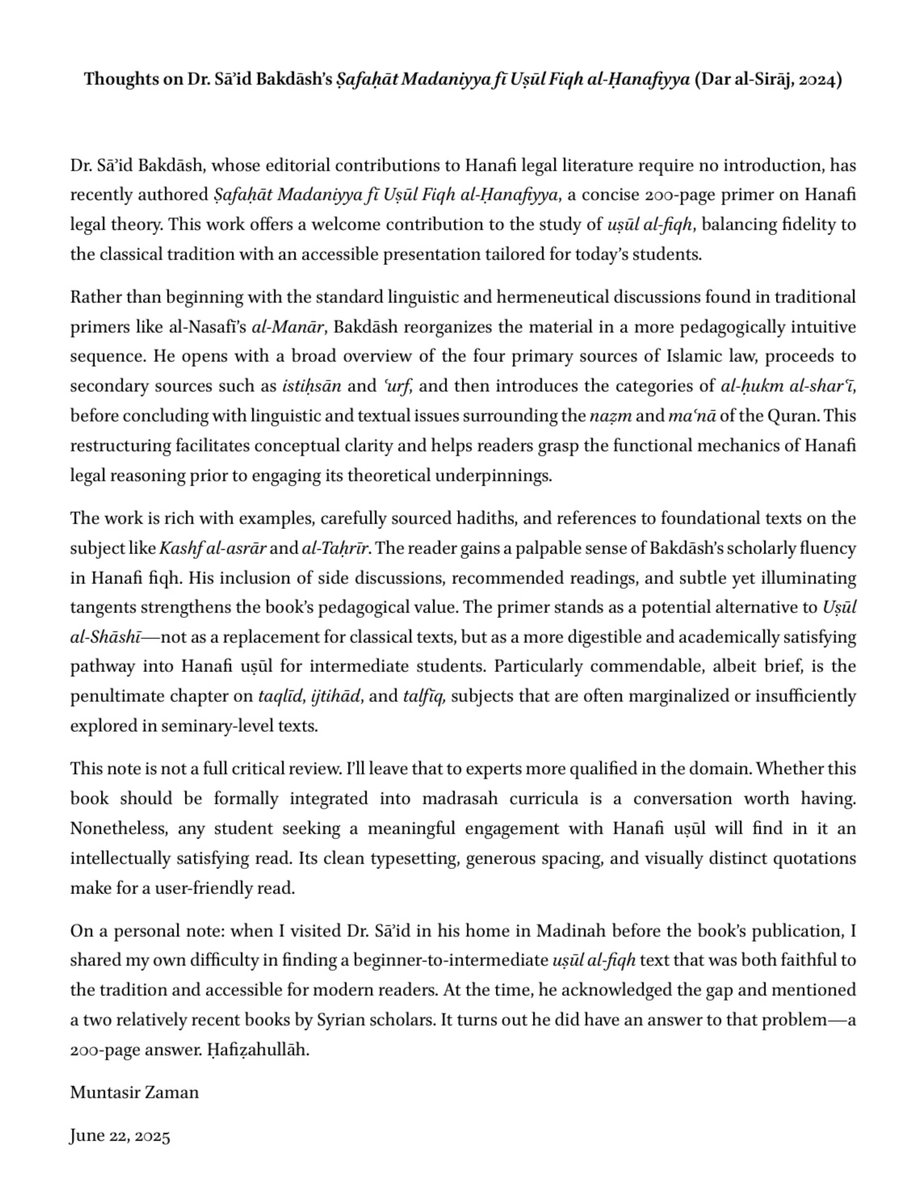

Reading Siyar this morning, I came across two noteworthy tangents by Dhahabī in the entries of ʿĀṣim and Qatāda: 1. A scholar can be a specialist in one field yet a novice in another. 2. Someone with an overall strong track record should be excused for certain flaws.


Suyūṭī was so offended by Qasṭallānī’s alleged plagiarism that when the latter showed up barefoot and bareheaded to make amends, Suyūṭī responded, “You’re forgiven!”… through a firmly shut door. Forgive? Sure. Forget? Tough.

Interesting to see two major Mamluk-era historians disagree on the conflict between historical reports and empirical data: 1. al-Maqrīzī (d. 845 AH) defends the transmitted reports about human giants, 2. Ibn Khaldūn (d. 808 AH) rejects them as myth, privileging observation.


Here's a paper that I published on dealing with the conflict between Hadith and empirical data in the Journal of Islamic Sciences (CIS).

While Delhi is regarded as the center of ḥadīth scholarship in the subcontinent—thanks to Shāh Waliullāh—an equally vibrant hadith nexus emerged from Sindh and Gujarat (via Ḥijāz). Ṭāhir Paṭṭānī and Ḥayāt Sindī were a drop in the Indian Ocean scholarship from the 15-1850.

Like Abul Ḥasan Sindī before him, Aḥmad ʿAlī Saharanpūrī (d. 1880) was the most prolific hadith muḥāshshī in the 19th century. Alongside critically editing texts, Saharanpūrī wrote insightful ḥawāshī on several ḥadīth compilations—read by millions of students to this day.

United States Tendências
- 1. Cloudflare 30.8K posts
- 2. #heatedrivalry 29.9K posts
- 3. Cowboys 73.7K posts
- 4. Happy Farmers 1,903 posts
- 5. LeBron 114K posts
- 6. Warner Bros 31.8K posts
- 7. Lions 93K posts
- 8. fnaf 2 27.7K posts
- 9. Wizkid 178K posts
- 10. Pickens 15.1K posts
- 11. rUSD N/A
- 12. #PowerForce N/A
- 13. Shang Tsung 35.7K posts
- 14. scott hunter 6,704 posts
- 15. Paramount 21.8K posts
- 16. Gibbs 21K posts
- 17. Jake Tapper 43.7K posts
- 18. Davido 98.4K posts
- 19. Scott and Kip 3,892 posts
- 20. Cary 47.1K posts
Talvez você curta
-
 Zakariyya Books
Zakariyya Books
@zakariyyabooks -
 Irshad Centre for Hanafi Studies
Irshad Centre for Hanafi Studies
@irshadcentre -
 Samir Hussain
Samir Hussain
@TheUsuli -
 Tabraze Azam
Tabraze Azam
@tabrazeazam -
 Ibn al-ʿAlāʾ
Ibn al-ʿAlāʾ
@fahd_ibn_ala -
 Hamza Karamali
Hamza Karamali
@hamzakaramali -
 Ismaeel Books - مكتبة إسماعيل
Ismaeel Books - مكتبة إسماعيل
@Ismaeelbooksuk -
 SHARIAsource
SHARIAsource
@SHARIAsource -
 Shaykh Amin Kholwadia
Shaykh Amin Kholwadia
@shaykhamin -
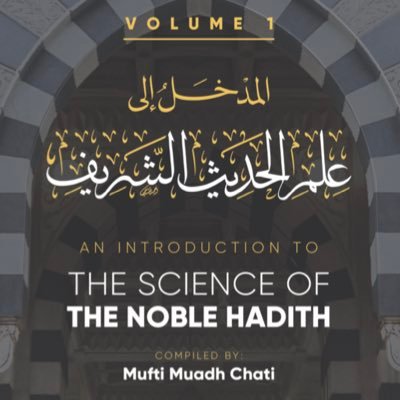 Muadh Chati
Muadh Chati
@muadhchati -
 DrHaroonد.هارون سيدات
DrHaroonد.هارون سيدات
@HaroonSidat -
 DİB Diyanet Akademisi
DİB Diyanet Akademisi
@DibAkademi -
 Darul Qasim College
Darul Qasim College
@DarulQasim -
 Faisal Hassan
Faisal Hassan
@FaisalH_UK -
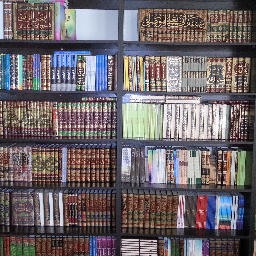 Husain Kadodia
Husain Kadodia
@HKadodia
Something went wrong.
Something went wrong.





























